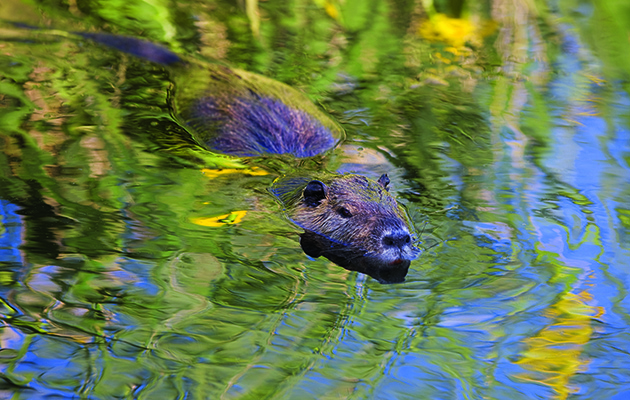What happened to the coypu in England?
There were once 200,000 coypu in East Anglia, but trapping campaigns that started in the 1960s eventually eradicated them.

The coypu was once widespread in East Anglia
At up to 3ft long including the tail, and weighing perhaps 9kg, the coypu is fairly impressive for a rodent. It is not quite a capybara or a beaver, but much bigger than the common rodents such as mice, voles and squirrels that we are used to in the UK. In many ways, you could consider the coypu to be something like a monstrous water vole, living along rivers and in swamps and marshes, and feeding on a wide range of mainly plant foods. Just 40 years ago the coypu was a common mammal over much of East Anglia. So what happened to it?
When did the coypu arrive in England?
The coypu — or nutria as it was commercially known — was first introduced into the UK for fur farming. It originates in South America and, like the US mink, escaped and established itself in the wild, not least because there were no rules about keeping coypus properly confined. Though they are quite shy and nocturnal, I remember seeing them several times on my annual college birdwatching trips from South Wales to Norfolk in the late 1970s. I also managed to acquire a couple of skulls for the small collection that I put together during my teens.
By this time, coypu were widely distributed across an area from southern Essex north to the Norfolk coast, spreading from the east coast west to Cambridge, and around the Wash into south Lincolnshire. At its peak in the late 1950s, the population was believed to be up to 200,000 individuals, though later scientific work suggests that this was an overestimate.

Coypu did a great deal of damage to vegetation reedbeds and crops, as well as burrowing through flood defences
Coypu damage
Once they got going in the wild, coypu became a real menace, causing serious damage to natural vegetation, and destroying reed beds. Add to this a penchant for eating crops such as cereals and particularly sugar beet and other roots, and perhaps worst of all burrowing through flood defences, and you can see why control was considered essential.
https://www.instagram.com/p/B1WUismCMiv/
As a response to the population peak of the late 1950s, the government set up two initiatives: the first a coypu research laboratory in 1962, and the second to run a trapping campaign until 1965. The latter employed 14 trappers, and set about a programme working from the edges of the known distribution inwards. This, combined with the effects of the notorious big freeze of 1963, resulted in a significant reduction. However, there were a number of flaws, most notably that the main trapper force spent much of its time clearing low-density areas, rather than maximising capture rate. We now speculate that the main impact of that campaign in the 1960s was to keep the population down after the devastating effect of the 1963 cold.

Compare the size of the coypu skull (left) with that of a badger (right) and a domestic guinea pig (foreground)
Coypu and trapping rafts
By the mid-1970s, after a series of mild winters, the coypu was back in the ascendancy, despite a degree of control. By now, the scientists knew far more and, in 1977, the government set up a coypu strategy group. this was persuaded that eradication was possible, provided that a fairly ruthless campaign was followed, with more trappers and a clearer strategy.
This time, 24 trappers were employed on a 10-year project starting in 1981. With the aid of careful ongoing analysis, including dissection of bodies to understand population structure, this approach was successful and the coypu was effectively extinct by 1989. Interesting elements included an absolute decision that the project would end after 10 years, whatever the result, and that if the trappers were successful they would get a bonus of up to three times the annual salary, declining as the 10-year deadline loomed. The trapping was carried out using weldmesh cages baited with carrots, and the captured animals were despatched using a .22 pistol.
One of the more interesting developments during the project was the adoption of trapping rafts. As well as being relatively safe from interference, the rafts kept the baited traps at water level and attractive to coypu, throughout the cycle on tidal waters such as the Norfolk broads.
Shooting census shows large rise in non-native species
Results of the National Gamebag Census (NGC), which shows rising and falling population trends for 20 mammal species, have been…
Hebridean mink project
Eradicating American mink from the Western Isles
The marvel of minkhounds
Selena Masson joins the followers of the Kent & Sussex Minkhounds at the pack’s opening meet to hunt rats on…
The last coypu
Later in the campaign, alongside the trappers a few independent verifiers were employed to use carrots and rafts to look for coypu activity in “cleared” areas. As you might expect, the last coypu was not trapped anyway and after the final capture, two elderly males were killed by cars.
In the end, by January 1989, no coypu had been caught for 21 months and the verifiers were finding no evidence, so the campaign was declared a success and ended, with the trappers receiving their bonus.











